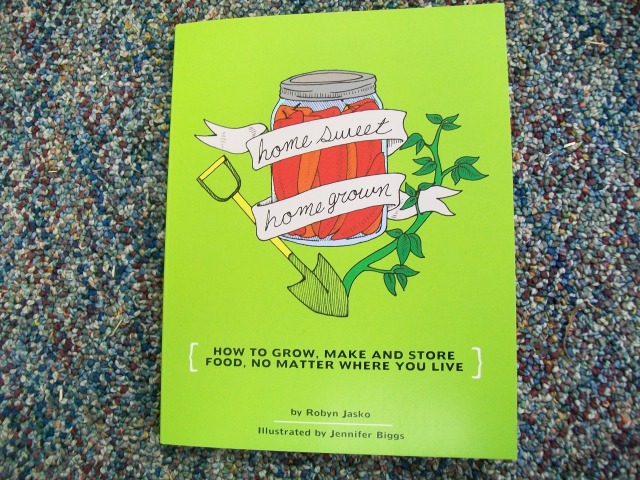Book List: 2012 Spring DIY Farm and Garden Books and Zines! (Part 1 of 3)
Here at Microcosm we are super grow-your-own friendly (in fact, half of us live on a farm). In the name of making the world a better place we wholly advise growing the things you eat. (Or at least as much as you can.) In that spirit, here’s our list of books and zines that are mega helpful if you’re planning on doing any sort of DIY farm and garden stuff this year! Stay tuned for part two of this list later on in the week!
Homesweet Homegrown: How to Grow, Make, And Store Food, No Matter Where You Live
Robyn Jasko and Jennifer Biggs’ Homesweet Homegrown is self-described as “a simple DIY guide to growing, storing, and making your own food, no matter where you live.” An ideal companion to Raleigh Briggs’ DIY guide Make Your Place, Jasko and Biggs’ debut book will turn you into a healthy, happy farmer even if you live in a big city sky-rise. Based around eight comprehensive sections (Know, Start, Grow, Plant, Plan, Make, Eat, and Store), this wonderful 128-page guide takes you through all the steps of crop nurturing, and gives the goods for everyone from the base beginner to the well-seasoned farmhand. (The recipe section alone is enough to keep you comin’ back to this gem for years to come!) Narrated in a friendly, helpful tone by Jasko and held aloft by Biggs’ great illustrations, this book is the definition of awesomely useful. Super, super, SUPER inspiring. Grow your own! https://microcosmpublishing.com/catalog/books/3613/
Home Composting Made Easy
This is apparently the world’s most popular compost guide! It’s a little zine with step by step instructions and answers to your most common questions, such as Why should I compost in the first place? Can I include manure? And how exactly does one go about vermicomposting? This zine is bright, colorful, and accessible for anyone and everyone who has an interest in creating less waste. https://microcosmpublishing.com/catalog/zines/2397/
Growing Stuff
A vibrant and quirky guide for anyone wishing to transform their minimal outdoor space. With easy-to-follow instructions on the basics of growing flowers, herbs, vegetables and more, Growing Stuff provides an excellent introduction to the world of horticulture. A wide selection of creative ‘recipes’ will help you take growing plants to the next level by making use of them with craft and culinary projects. The book shows you that things can be grown in even the most unexpected places, and with minimum prior knowledge or skill. Written in an engaging and informal way, the book is an ideal introduction to green-fingered activity, and is sure to convert even wary or novice gardeners to this creative and wide-ranging practice. https://microcosmpublishing.com/catalog/books/3421/
Notes for Building a Hearty Inner-City Community High Tunnel
Wow, this one is somethin’ special! The full-size Notes for Building a Hearty Inner-City Community High Tunnel gives the goods on building an unheated greenhouse called a “high tunnel.” (Says Bill in the zine’s intro, “This is a small community project for experienced food growers who want an affordable way to extend warm seasons.”) In easy, illustrated (comic book style) steps Bill and Max Konrardy lay out the tools and supplies you’re going to need; the design principles; a guide on making a correct angle; visualization of your project; team and material gathering; layout and leveling, and much more. All of this is done in a friendly, accessible way (i.e. you don’t have to be a master builder to do this.) The Konrardies’ plans will have you up and running and to the final, finished stages for less than $1,000 (these things are generally staggeringly expensive.) This zine is incredibly inspiring, well-illustrated, and really fun to thumb through. Much recommended! Note: see an inside look at this zine’s pages over at our blog. https://microcosmpublishing.com/catalog/zines/3770/

Czech One Two #1
Daniel’s personal zine about working on an organic farm. He’s quick to dispel myths of idyll earth tending, and confesses that it is hard backbreaking work. His home is a barn in Virginia, and his bosses yell at him until he has tears in his beard. But it’s not all terrible. Daniel still gets nostalgic for rural life from time to time. He misses being outside 12 hours a day, and all his fellow workers. Czech One Two is a realistic look at the often romanticized job of organic farming.
https://microcosmpublishing.com/catalog/zines/3289/























